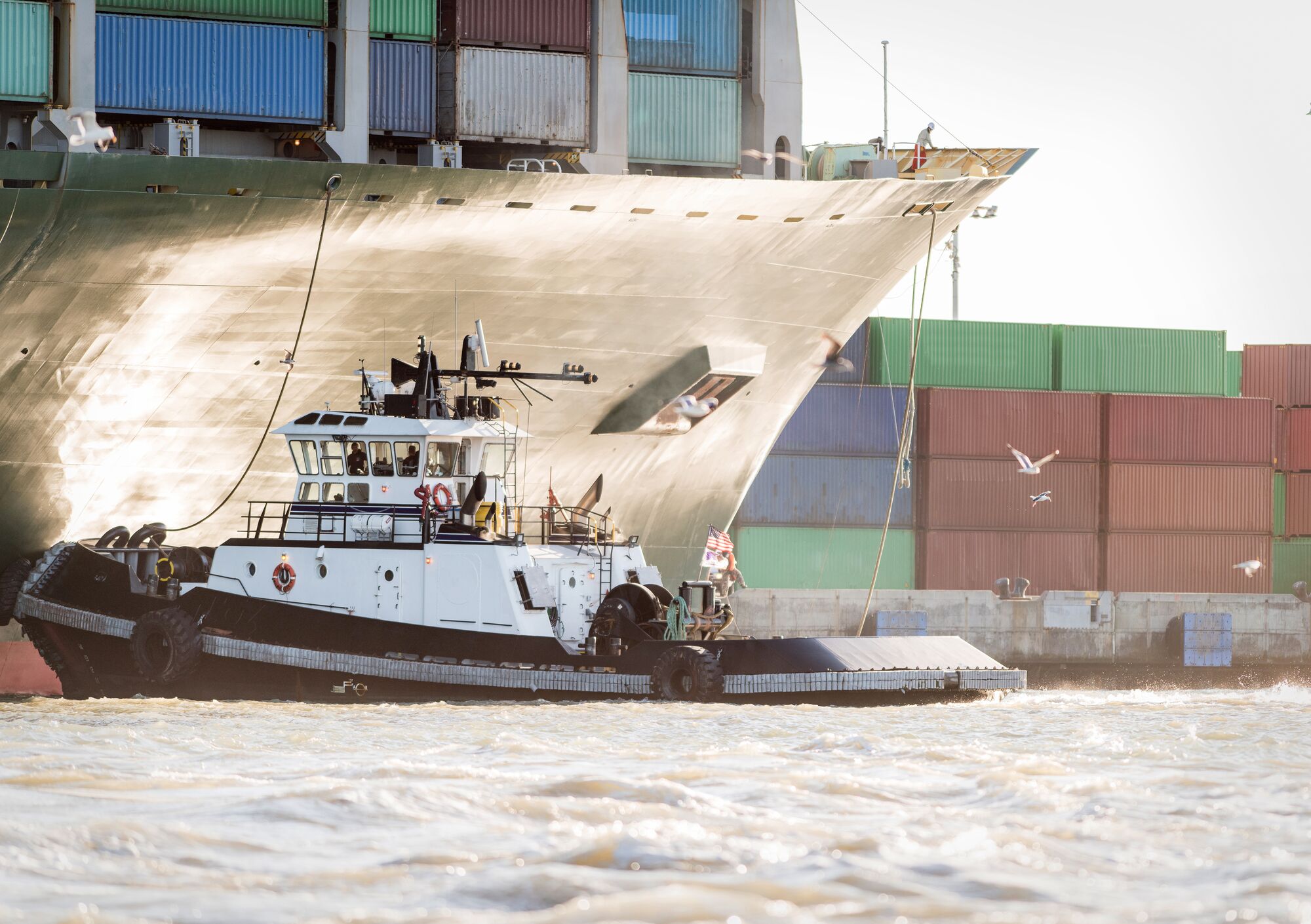California is Building a Safe Harbor for Our Lungs
The race to electrify everything turns to tugboats, ferries, and commercial fishing boats.
Most Californians don’t think about our ports very much, even as we consume massive amounts of goods that pass through them. But these harbors through which so much of our commerce passes also represent a major threat to our health – a threat that the California Air Resources Board may soon begin to fix.
The thousands of vessels that keep these ports humming – tugboats, dredges, ferries, commercial fishing vessels and more—burn dirty diesel fuel, one of the worst sources of nitrogen oxides and small particulates. This type of pollution contributes to lung and heart problems, cancer, and premature death.
It’s a huge problem. At the ports of Los Angeles and Long Beach, the busiest port complex in the entire U.S., pollution from harbor vessels reaches levels 90 times what the Environmental Protection Agency considers safe; it’s expected to be the area’s largest contributor of near-source cancer risk by 2023. And it’s not just the areas directly adjacent to the ports that suffer: Diesel pollution from the ports of Los Angeles and Long Beach reaches dangerous levels as far away as Anaheim.
Our other major port cities, including Oakland, San Diego and the inland port of Stockton, also face serious air pollution issues from harbor craft. In West Oakland, close to the Port of Oakland, one study found that residents were exposed to six times more diesel pollution than people living in other parts of the city.
We’re starting, slowly, to address the toxic pollution from diesel trucks. Now it’s time to deal with these harbor craft and create a safe harbor for our lungs.
Happily, CARB is about to consider new regulations that will get California started in that direction. Five years ago, California held a series of hearings to discuss the port pollution crisis, and community groups who are faced daily with a barrage of pollution from our logistics system asked CARB to do more to clean up sources of port pollution. One result from that community effort was a rule targeting this notoriously filthy equipment.
The rule, if adopted, would push the industry toward cleaner engines and start the transition toward zero-emissions harbor craft. For those zero-emission short run ferry fans out there, this is a groundbreaking rule as all of these ferries in California will be zero-emissions by the end of 2025 – the first zero-emissions ferry requirement in the nation. The proposed regulation would reduce nitrogen oxides emissions by 34,340 tons between 2023 and 2038 and cut particulate emissions by 1,680 tons.
Across California, these changes will prevent 531 premature deaths, in addition to cutting emergency room visits and hospitalizations for asthma, respiratory and cardiovascular illnesses.
These changes are critical and represent an important first step, but they’re just the start. We believe an even faster transition to zero emissions for many of these vessels is possible. Zero-emissions tugboats are already being deployed in California, and battery-powered ferries are running in Denmark and China. The technology continues to advance rapidly, but the industry needs a push from regulators to speed the transition.
Happily, CARB has built into the new rules the opportunity to strengthen them, with an implementation and technology review every two years, starting in 2023. Systematically tracking advancements in technology as well as the implementation of the new standards will give regulators a chance to make adjustments and the public an opportunity to weigh in.
Unsurprisingly, not everyone likes the proposal. For example, the ports of Los Angeles and Long Beach and the commercial passenger fishing industry – a surprisingly large contributor of diesel pollution – have pushed to weaken CARB’s proposed rule.
We hope the Board will reject such short-sighted advice. In addition to the health impacts from diesel vessels at ports, greenhouse gas emissions from global shipping are increasing, and diesel pollution from harbor vessels contributes to that dangerous trend. The latest Intergovernmental Panel on Climate Change report rang new alarm bells, stating, “Climate change has caused substantial damages, and increasingly irreversible losses, in terrestrial, freshwater and coastal and open ocean marine ecosystems,” leading to extreme weather events and increased deaths.
Diesel pollution from harbor craft is a fixable problem. Our lungs and our climate can’t wait.
The California Regional Office fights for the rights of all to a healthy environment regardless of where in the state they live; we fight to protect the magnificent natural spaces and wildlife found in California; and we fight to transition California to a zero-emissions future where cars, trucks, buildings, and power plants run on clean energy, not fossil fuels.
